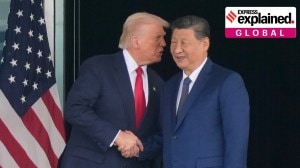Neutrality at RBI
With indications the world economys still in trouble,the clamour to raise rates is misplaced...
Inflation numbers have shown a sharper increase than expected by most observers. According to government data released on Monday,inflation based on the wholesale price index was 10.16 per cent for May 2010,compared with 1.38 per cent a year ago. This has led to a clamour for the Reserve Bank to raise rates. However,the decision to raise interest rates should depend on the forecast for inflation and output gap for the Indian economy. Unless the data released indicates that our expectations for the future have changed,there is no reason to change track on monetary policy. There is no data which suggests that the world is moving sharply towards a higher inflation path. Indeed,there is turmoil in Europe and indications are that the world economy could remain in trouble. The world business cycle recovery is one of the key variables in our forecast of inflation and the output gap. None of that has changed with release of the latest data.
The current stance of monetary policy is one where the RBI is slowly moving towards a neutral rate with small rate hikes,from which it may be possible to loosen policy if and when required. The statements by the finance minister and his chief economic advisor that no immediate increase in interest rates is required as a consequence of the latest inflation hike should be seen in this context. For the last few months,policy-makers have been expecting headline inflation numbers to keep rising till July. The new data fits well with this view. Inflation has risen as expected. It,therefore,doesnt warrant a sudden or sharp change in path,or mid-term hike.
What should the RBI do? The slow move towards a neutral stance is justified. This would mean a perhaps,25 basis point rise in interest rates in the July or October policy. Given the difficult situation in
Europe,that by most accounts is not yet solved,there must be a wait and watch approach to any tightening of monetary policy. There could be difficulties with tightening too much when money supply growth is still below 15 per cent,when the world economy is unstable and when investment is just picking up. The RBI is correct in not moving towards a tight monetary policy stance in the last few months. This stance,and only the gentlest move towards neutrality,is required for growth and stability of the economy.



- 01
- 02
- 03
- 04
- 05




























